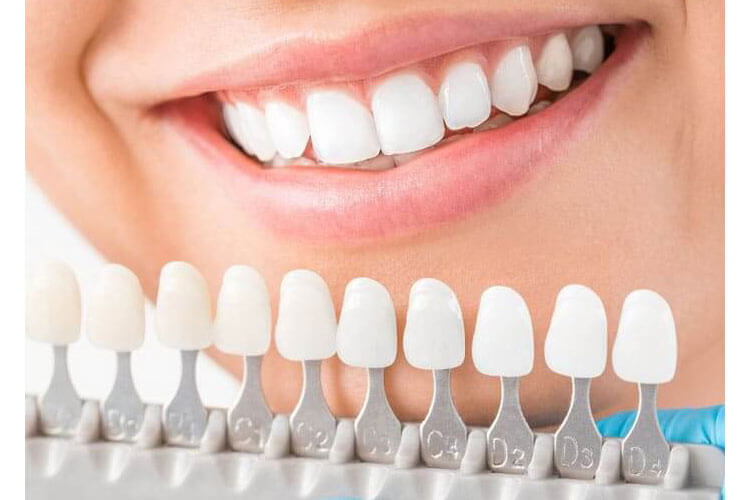A dental crown is a type of tooth repair that covers the full visible portion of the tooth.
It is the most robust type of “dental restoration”, and Dr. Hawryluk Jr. uses it for teeth that have encountered a lot of damage from decay or trauma. Many teeth that have had extensive fillings end up needing crowns. Some patients have many teeth crowned, and we can join them together to form a “bridge” to replace an absent tooth in between two crowned teeth. However, single crowns (not part of bridges or full mouth crowning) account for 75% of the crowns done in North America.
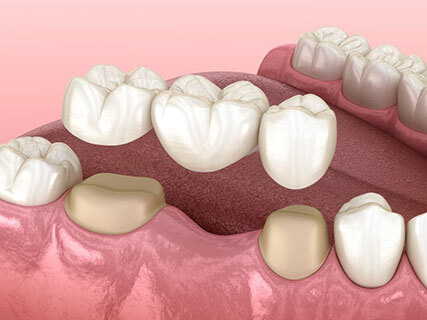
Please our link to learn more about the process of crowning a tooth:
Porcelain Crowns Mississauga On
One of the keys to perfect fitting dental crowns and bridges is to be able to see the “finish line”, and this is a key focus area at St. Lawrence Dentistry. It’s the border of the “prepared” tooth structure that meets the tooth’s unprepared surface. Dental labs, which manufacture dental crowns, say that over 70% of all dental crowns they receive have some inconsistency with the “finish line” of impressions they get from dentists. The difficulties a dentist could encounter can relate to “access” to a tooth. For example, a second molar can be arduous for a dentist to work on for a patient who cannot open wide and whose tongue is in the way, and the saliva level is high. Sometimes dentists have to go below the gum line to “prepare” your dental crown, and in these instances, blood can obfuscate the tooth. Dr. Hawryluk has a full armamentarium to make these otherwise challenging situations simple. These types of circumstances above can influence the type of crown which is best to use.

St. Lawrence Dentistry’s protocols and materials for dental crowns have dramatically changed over the last 8-10years. Now there are very few porcelain fused to gold crowns done. Many other materials are used, such as zirconia, lithium disilicate (Emax or LiSi Press brand names), or ceramic/composite hybrid materials.
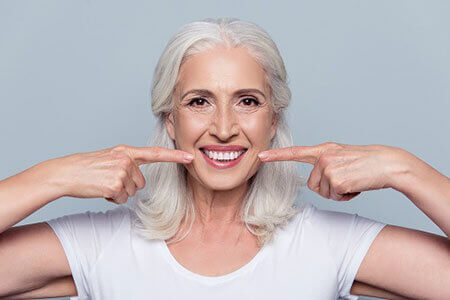
Both full-zirconia and lithium disilicate restorations have proven themselves in situations requiring only single-tooth repairs. Full-zirconia and zirconia-based restorations also have proven themselves for “three-unit fixed bridge use” for replacing one missing tooth. One drawback of a zirconia bridge is a relatively large connector junction of about 4 mm in diameter is needed to provide sufficient strength when connecting the abutments to the “pontic” areas. The large connector area can make it more difficult to floss and dampen the aesthetic outcome. Although some dentists may use it in this fashion, Dr. Hawryluk does not recommend lithium disilicate be used for making dental bridges at this time. When making full-ceramic three teeth bridges, Dr. Hawryluk suggests zirconia-based restorations.

The original full-zirconia restorations were not esthetically acceptable because of their opaque, off-color, and light characteristics. However, dentistry has made remarkable progress. Recently zirconia has improved in terms of its ability to mimic nature. However, St. Lawrence Dentistry recommends lithium disilicate over full zirconia for single crowns in the esthetic region of the mouth. Lithium disilicate remains esthetically superior and can satisfy the most demanding patients. They can match the esthetic characteristics of natural teeth very closely.

To learn more about the aesthetics of Emax crowns, please visit us here:
Creating Natural Beauty Through Use Of Lithium Disilicate
There is a lot of publicity and online attention directed to promoting zirconia crowns. A misconception is “zirconia is so hard, and it can’t break. But the reality is anything can break. Zirconia is only tough if the dentist follows the appropriate preparation guidelines. Specifically, this means a 1.5-2mm reduction off the occlusal (top of tooth surface) and 1mm at the finish line. Zirconia crown fabrication can be made thinner. However, this increases strain, limiting its durability. The strength of zirconia also depends on what kind of zirconia. The bruxer esthetic zirconia is a graduated strength and are long-lasting but can still be used for cosmetic situations because it can be made translucent. However, as we get more translucent, we decrease our strength.
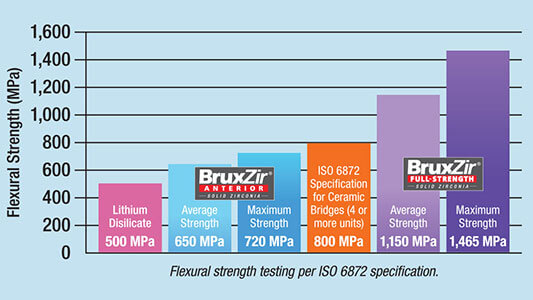
The megapascal (MPa) is the unit we use to compare a dental crowns robustness. It measures stiffness, tensile strength, and compressive strength. Bruxer Full-Strength zirconia is between 1100 and 1465 MPa. “Bruxer Esthetic” is 700-800 MPa, whereas and the “Full-Anterior” zirconia is between 650-720 MPa. The anterior fo the starts to approach lithium disilicate’s strength (500 MPa), commonly known by brand names such as Emax of LiSi Press. On a second molar where a patient is grinding, Dr. Hawryluk Jr. will often use full strength zirconia, but patients want something with more aesthetics in the anterior, which sacrifices some of the strength. Lithium disilicate is used for minimally invasive crowns because we can make them less than a millimeter thick, and they will still be durable. They are very esthetic and translucent. They are more formidable than the older materials such as ‘feldspathic porcelain’ but not as strong as zirconia. We use lithium disilicate for veneers, inlays, onlays, crowns.
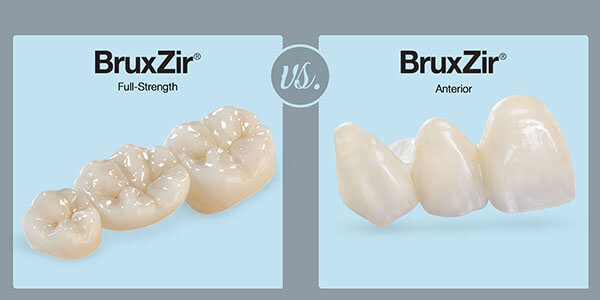
The hybrid ceramic crowns have become a “hot area” recently. Hybrids consist of a resin type material with a blend of ceramics in a “polymer network”. St. Lawrence dentistry works with GC products. Their hybrid brand is Cerasmart, a unique dental material that combines a high strength ceramic and a composite’s best characteristics. Advantages of Cerasmart are: it is repairable in the mouth, it has unsurpassed marginal integrity, it has natural opalescence and fluorescence. They have a little flexibility to them, making it easier for the dentist to “try-in”. They are not brittle, have good wear resistance, are friendly to the opposing dentition. Although they are somewhat strong (150-250Mpa), the hybrid strength does not come close to rivalling zirconia. For this reason, we use hybrid ceramics primarily for smaller restorations, such as inlays on onlays.
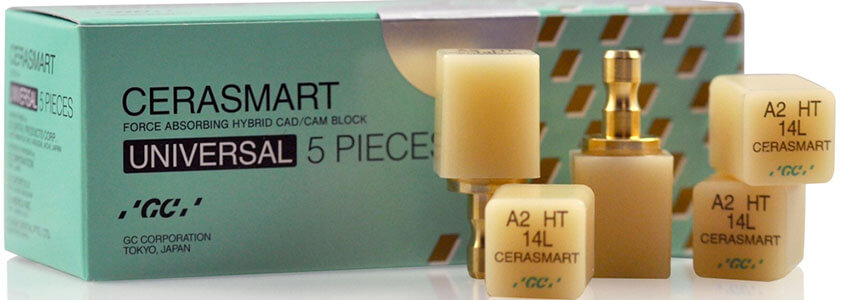
The engineering of contemporary dental crowns involves a few rules that we follow when designing your dental work. It is crucial the tooth “preparation” be smooth. We follow the contour of the gingival margin or “gumline”, and we keep the tooth preparation finish line right at the gum line when possible. When we want to take the dental finish line below the gum line, we use a a hemostatic gel with 25% aluminum sulfate to facilitate this. Electric dental “handpieces” are a huge help in designing precision dental work, and we are big fans of them at St. Lawrence Dentistry. Besides giving superior accuracy, we can ‘dial down’ the RPM’s to provide us with a clean finish line. They allow for maximum control, something you cannot do with the traditional ‘air-driven’ dental handpieces. We can create smoothness that follows the contour of the soft tissue with our modern electric equipment.
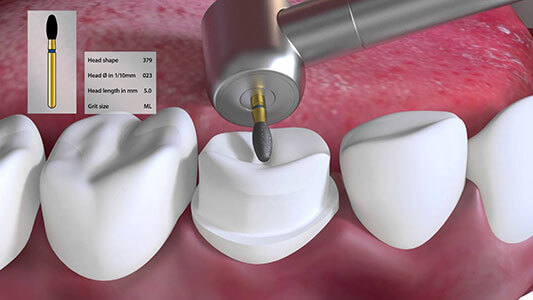
When we try the zirconia crown in place, we ensure the contour and shading are proper. The shade of the crown is of paramount importance in creating pleasing esthetics. Dr. Hawryluk Jr. typically makes multi-layered and multi-shaded zirconia crowns. Our crowns usually have a gradation in shade from top to bottom. Also, there is often a gradation of strength. For example, in the center “core”, we use stronger zirconia than the visible esthetic edge. We focus on getting a high polish to these crowns because a highly polished surface means less abrasion to the opposing dentition than “glazed zirconia”. Dr. Hawryluk takes a lot of time in the polishing process; slowly, dullness fades, and a brilliant sheen emerges. It is pleasing to see the shine coming from a highly polished zirconia and the light bouncing off.
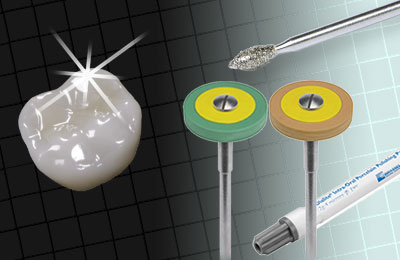
The intaglio surface is the inner part of a dental crown, and its treatment depends on the type of crown. Once Dr. Hawryluk has tried your crown, there are salivary impurities contained within it. We clean all salivary contaminants off zirconia or lithium disilicate crowns before cementing. One excellent product we use is called Ivo Clean. It is an alkaline suspension of zirconium oxide particles. A drop is placed in the crown, scrubbed, and then rinsed off for 20 seconds. Its usage is for all zirconia products, as well as metals and lithium disilicates. Before we insert Emax crowns, we treat the intaglio surface with a “coupling agent” or “salinating” agent. Coupling agents are synthetic hybrid inorganic compounds used to promote adhesion in silica-based materials such as lithium disilicate. These crowns are already etched at our lab using hydrofluoric acid. In non-silica based materials such as zirconia or metals, silane does not do the trick. We must use a zirconia primer or a “multi-surface primer” for zirconia bonding. An excellent multi primer is GC’s multi primer, which works well for zirconia and Emax.
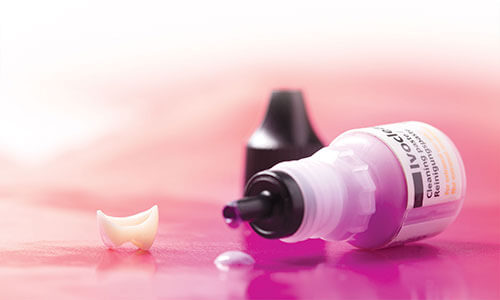
Cementation of the crown is the last step in delivering the tooth crown to the patient. The most common type of cement used at St. Lawrence Dentistry is self-adhesive resin cement. These are popular cement as no etching, priming, and bonding are needed. They help decrease the thermal sensitivity of the tooth; the excess is simple to clean up. They have decent bond strength, but you need a retentive tooth design to make it work well. If you have a crown that “needs help” because there is not much retention, we use a bonded resin cement. We use a universal adhesive with this cement and use saline for lithium disilicate and “Zr” primer for zirconia. GC link-force is the brand used by Dr. Hawryluk, and it is the strongest dental clement in the marketplace.
To learn more about crown cementation, please visit us here:
Dental Cement: The Key To Long-Lasting Dentistry
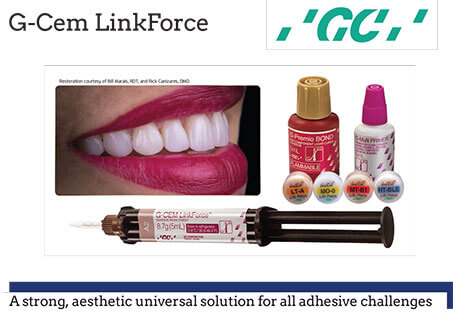
Modern dental crowns are incredible and lifelike. St. Lawrence Dentistry has the full spectrum of dental crown types, and we will use the one best for you. You will be amazed by the beautiful aesthetics of contemporary dental crowns!
Reference (Viva: Kaminer: zirconia and Emax crowns.2019)
- St. Lawrence Dentistry Looks Forward To St. Patrick’s Day! - March 12, 2025
- Understanding Dental X-Rays and Radiation: What You Should Know - January 13, 2025
- Happy New Year from St. Lawrence Dentistry! - December 30, 2024



